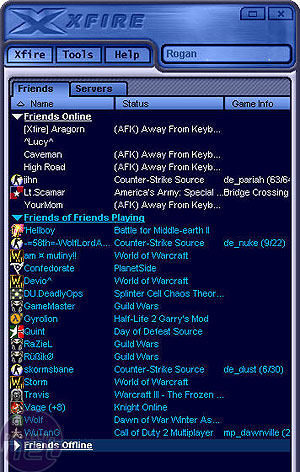Multiplayer and friends
At its heart, Steam has always been multiplayer oriented. One of Steam’s best features is its integrated game browser, something that the world’s n00bs have been dependant on since the day it first decided to start working properly.All of Steam’s multiplayer games can be connected to a game server and launched automatically with only a few clicks. Of course, not all games actually have anyone playing, which is generally a good guide to quality. For example – Half-Life: Source Deathmatch and CS 1.6 are two of the most popular games on the network and you’re almost guaranteed to find a populated server, with a great connection, at any time of the day in every corner of the world.
Other games, such as Rag Doll Kung-Fu, never seem to have an active server, which stands to reason as the game has a near vertical learning curve in single-player mode – and playing the demo was about as much fun as throwing a real rag doll at a wall.


In a surprisingly short time the number of users on Friends mushroomed and the network creaked briefly, before becoming terminally overloaded. For a while everyone tried to connect to Friends, and if you were lucky you actually did. When you eventually got in, you’d always be the only one there. People gave up, and then the network went down for maintenance.
That was then, but recently someone threw the on switch, and the new network flicked into life. So far, the new version seems stable and people are slowly starting to enable their accounts and rebuild their own personal networks. At the time, with no direct competition, Friends looked like the best way to track other gamers. Now, post Xfire, it’s looking dated.

Xfire, on the other hand, allows you to build friends contacts from a list of your friends’ friends. It also allows you to monitor a vast list of different games, with Xfire showing pride in an ever-growing list of supported titles. It also provides support for chat rooms and some nifty voice chat.

MSI MPG Velox 100R Chassis Review
October 14 2021 | 15:04










Want to comment? Please log in.